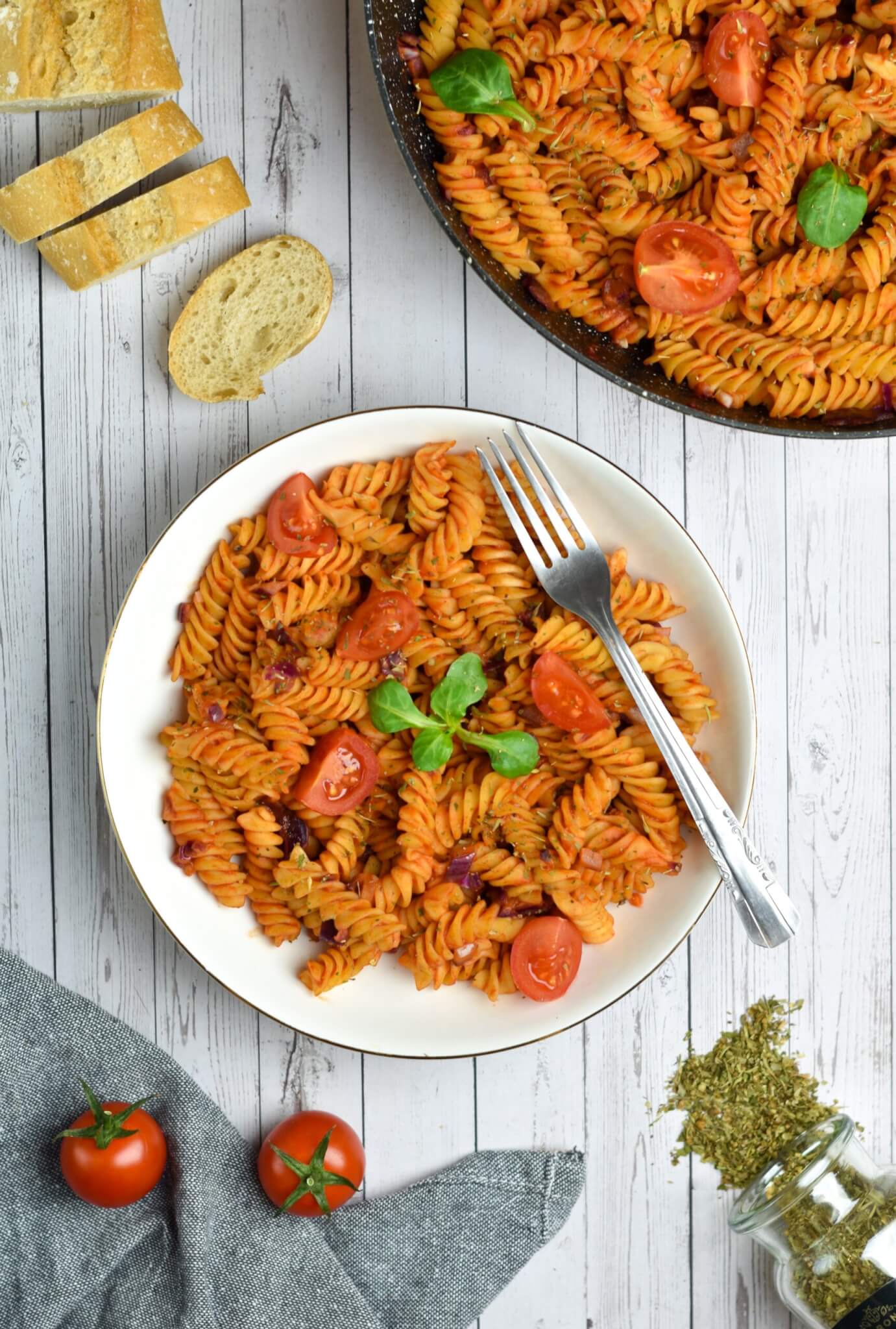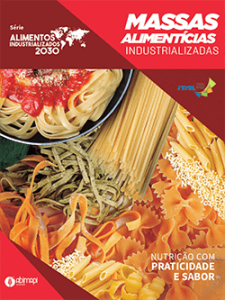MYTHS AND FACTS RELATED TO INDUSTRIALIZED CAKES
The analysis of the sample of 269 doughs reveals facts and bring down many myths related to industrialized products.
MYTH: THEY ARE POOR IN NUTRIENTS
FACT: THEY ARE NUTRIENTS, THEY CONTAIN CHARACTERISTIC DOUGHS NUTRIENTS
- They are usually sources of PROTEIN and can contain significant quantities of FIBERS
- The nutritional composition of meals prepared with doughs can vary significantly according to the types of ingredients (meat, dairy, vegetables, dressings, nuts, etc.) used in the recipe
MYTH: THEY HAVE HIGH QUANTITIES OF FAT, SUGAR, AND CALORIES PER GRAM
FACT: IN DOUGHS, THE QUANTITIES OF SUGAR, FAT, AND CALORIES DEPEND ON THE RAW MATERIALS USED, BUY THEY VARY SIGNIFICANTLY AND THERE ARE PRODUCTS WITH REDUCED CONTENT OF SUGAR AND FAT
- The quantities of SATURATED FATS vary a lot according the different types of dough
- There are versions with fat reduction
MYTH: THEY HAVE HIGH QUANTITIES OF SODIUM
FACT: IN AVERAGE, DOUGHS DO NOT CONTAIN LOW QUANTITIES OF SODIUM, BUT THERE ARE PRODUCTS WITH SODIUM REDUCTION
- Salt is one of the basic ingredients for doughs, whether prepared in the industry, restaurants, or homes.
- However, the quantity used vary significantly among different brands and different types, it is not possible to generalize
- The total quantity of salt in a meal depends much on the types of dressing and the dough side orders
MYTH: THERE IS LITTLE PRESENCE OF IN NATURA FOOD
FACT: WHEAT, WATER, EGGS AND SALT ARE THE MAIN INGREDIENTS, THE SAME RAW MATERIALS USED IN THE DOUGHS MADE IN RESTAURANTS OR IN THE DOMESTIC ENVIRONMENT
- Basically, industrialized doughs are made with usual war materials used in domestic cooking: wheat, water ans salt, eggs, vegetables and other natural ingredients can be added
- Industrialized doughs, including the instant, are not made from substances originated from food or synthesized from other organic sources
- Industrialized doughs are not imitations of homemade doughs, nor are they inventions of the moder science and food technology applied to the industries, C&T de alimentos has evolved significantly in the last few decades and contributed to improve the products quality and safety
MYTH: FALSE BECAUSE THEY ARE PRESENT IN FOOD INGREDIENTS OF INDUSTRIAL USE
FACT: THE EVENTUAL USE OF INDUSTRIAL FOOD CAN OCCUR IS NOT A RULE OF THUMB IN THE SECTOR, AND ALL OF THEM ARE APPROVED BY ANVISA (MINISTRY OF HEALTH) AS SAFE FOR CONSUMPTION
- Some companies use a large quantity of ingredients, however, other don’t
- In an industrial scale, it can be inevitable to use food raw materials in its original state, being its processing necessary. However, the processes used in the ingredients processing or extraction are developed and used in compliance with the technical and safety standards
- The ingredients of industrial use used in some doughs have technological purposes and are provided in the legislation that authorizes its safe use
MYTH: THEY ARE BAD BECAUSE THEY HAVE A HIGH NUMBER OF INGREDIENTS
FACT: THE NUMBER OF INGREDIENTS VARIES ACCORDING TO THE MANUFACTURER, BUT IT IS NOT AN INDICATION OF LACK OF QUALITY, HEALTH, OR SAFETY
- Notably, in filled doughs and with seasoning sachet, some companies use a large quantity of ingredients, however, other don’t
- Using a high number of ingredients has no relation with the LOWER quality or safety of a food product. There is no scientific evidence to state that a product with 4 ingredients has a better quality and is safer than another with 5 or more ingredients
MYTH: THEY USE ADDITIVES CAPABLE TO MAKE THE PRODUCT EXTREMELY ATTRACTIVE (ADDITIVE)
FACT: IT IS NATURAL FOR A COMPANY TO SEEK FOR WAYS TO MAKE THEIR PRODUCT ATTRACTIVE, BUT THERE A NO ADDITIVE CAPABLE OF ADDICTING A CONSUMER
- Some companies use many ADDITIVES, however, other don’t
- Additives are used in very low quantities in relation to the main ingredients
- Most analyzed products do not use THICKENERS, STABILIZERS, EMULSIFIERS, DYES, FLAVORINGS AND PRESERVATIVES
- It is natural for a company to make their product more attractive to the consumer, as it is natural that it occurs at restaurants, homemade doughs, in order to please family and friends. Though, there are still no news of the existence a dough with “hyper-flavor”, “hyper-palatable” and “and almost addicting”
- All ADDITIVES used in industrialized doughs manufacturing are included in the specific legislation that authorizes its safe use
MYTH: THEY ARE FREQUENTLY ADDED WITH AIR OR WATER
FACT: WATER IS THE RAW MATERIAL INCORPORATION TO DOUGHS, BOTH FOR INDUSTRIALIZED AS TO IN RESTAURANTS OR HOMES
MYTH: THEY ARE BAD BECAUSE THEY HAVE UNFAMILIAR INGREDIENTS NAMES
FACT: IN FACT, SOME INGREDIENTS ARE A LITTLE FAMILIAR, BUT EACH OF THEM HAS ITS PURPOSE. THIS IS ALSO NOT AN INDICATOR OF LACK QUALITY, HEALTH, OR SAFETY
- The additives use technical nomenclature, which is not familiar to many people. But the name has nothing to do with the safety or health of an ingredient
- Many products are prepared with natural ingredients
MYTH: THEY USE HARMFUL MANUFACTURING PROCESSES
FACT: THE MANUFACTURING PROCESSES ARE SAFE. THE INDUSTRIES OF THE SECTOR USE QUALITY ANS SAFETY SYSTEMS IN THE ENTIRE PRODUCTION PROCESS
- Most of the processing stages and techniques do not imply in the product loss of quality or its inadequacy for consumption
- The existing processing techniques are very sophisticated, used to preserve the doughs appearance and texture, with dedicated systems in order to ensure the products quality and safety
- . The industrialized doughs have not been created to replace doughs from restaurants or homemade, but they meet the customers demand for variety and practicality, in addition of offering the warranty that the products were prepared within the best safety practices




